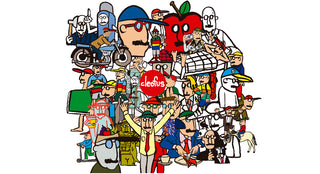There’s something heralding to be said about the Larry Davids, Jerry Seinfelds, Kermit The Frogs, and Mr. Magoos of the world. Beyond their particular brands of odd-man out and metropolitan-driven comedy, there’s an undeniable magic—or neuroticism, depending on how you see it—about their attention (or inattention in Magoo’s case) to details. Something about the way these four gentlemen and gentle-frogs compose, or discompose, themselves during the everyday and mundane has made them undeniable gods of comedy.
Unintentionally or not, my interview’s protagonist, Cleofus, as he is known by fans of his art and illustration, has placed himself among the presence of “the gods” by reinterpreting them in vintage Polo gear and observing the world in a similar, awkward, witty fashion. The results have been promising. Just a few months ago in June, Cleofus was commissioned for a solo show in Japan that has helped catapult steady production for his apparel brand Polito USA, named after the famous Latin radio host, Polito Vega and its relation to the word Polo. And just a month ago, the New York Times held an art event where Cleofus sold a very “Poli”-tical canvas. It was an image of his signature No Way Jose character dishwashing Donald Trump’s dome. How’s that for attention to detail? This level of wit and sheer work ethic—Cleofus’s zine catalog and Instagram illustration game is solid—made me ask questions like, Who is this guy and why is he so good at quietly poking fun at so much of our Big Apple cultural zeitgeist? So I met with the man behind the pencil at Bryant Park one fall afternoon and got some answers. 
How did you get into art and illustration?
I went to college for Fine Arts. I wanted to be an art teacher, but that didn’t work out. It’s hard to make money out of the Fine Arts, so I just taught myself how to use a computer and do graphic design. I also got into art through graffiti. Back in the ’90s, it felt like everybody was a graffiti writer coming up. Everybody had a tag name and was influenced by it. Seeing kids tagging around my way and me getting Subway Art—the book—was amazing. Trying to emulate all the styles in there is what really got me into art.
Who were some of the graffiti writers that really stood out to you?
Reas, Futura, old bombers around my way, TVT Crew, Med, JA, Ryno. I was just so influenced by bombing and the way people used to add the little characters next to their throw up—like the little faces inside of the “o’s.”
Tell me about your creative process. How do you get your ideas out?
I carry around a pad with me at all times. Sometimes it’s a tiny one in my wallet or a big one in my backpack. I’m constantly getting ideas, or I’ll see something and draw it. First, I draw it on a small scale, then I’ll take picture of it or scan it to get it into the computer.
It’s cool to see that you stick to the analog with the pencil and pad first.
We’re so spoiled with technology. I can just draw something in two seconds on the iPad and upload it to Instagram. Back in the day, we didn’t have that privilege. Everything had to be drawn and scanned. I try to keep things classic, but still adapt to the times. It all starts with the pencil and the paper. 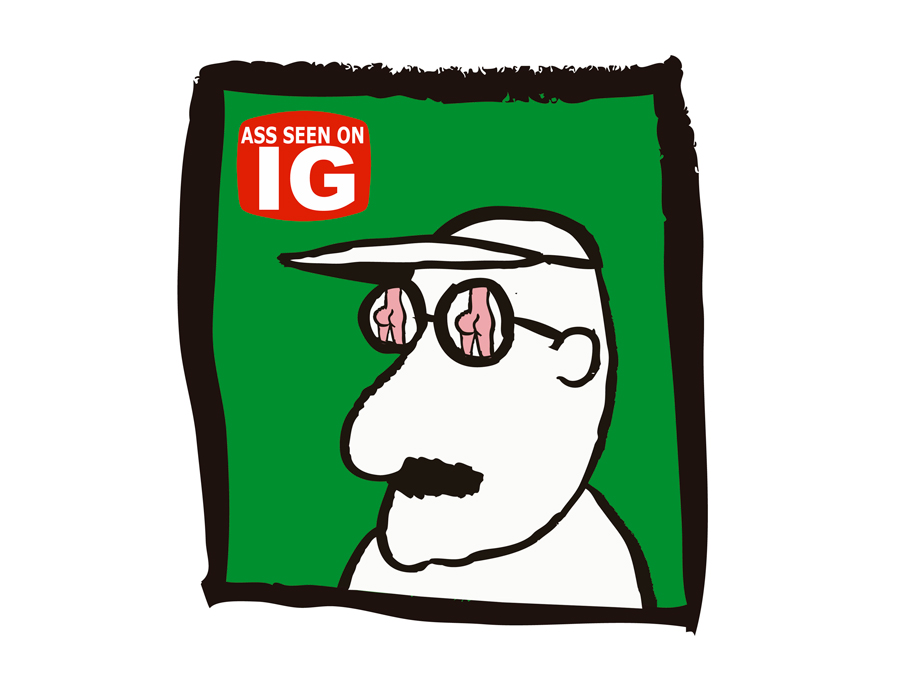
Tell me about your background and upbringing. It seems like there’s a big Latin/Spanish influence in your work.
I was born in Colombia, I came to the US when I was 8 months old. I was raised by my mom and my grandmother. They always spoke Spanish to me, so that Latin influence was always around me. Also, just living in New York and being around Latin neighbors and friends and other cultures. There was no way around it. I grew up outside of the city in Upstate New York, but I always had family and friends in the city. I was always here. I moved around a lot thoughout it, but I’ve mostly been Upstate New York.
I see a lot of Polo references in your work. Where does that stem from?
I remember coming to the city and everything being like a fashion show everywhere that I went. All the older kids that I looked up to where always dipped in Polo or North Face. I try to still bring some of that out today, with my artwork too. A lot of my stuff goes back to those days with the North Face and Polo.
Why Polo? Why was it such a big thing for kids in the city then?
It was just part of the graffiti culture. Everyone was just always in it, I’ve been always been into since. I like the colors and the logos. It always stood out to me. The way people rocked it was just different and brought out the best in it.
The long-billed hat is referenced in a lot of your work. What’s up with that particular piece?
The long-billed hat is a fly-fishing hat. It was popular in the ’90s and a lot of the Polo power pieces incorporated it. My boy Oscar 1992 also always rocked them. It’s a hat that we’ve always gravitated towards because it’s a great design and it’s different from what everyone else is wearing.
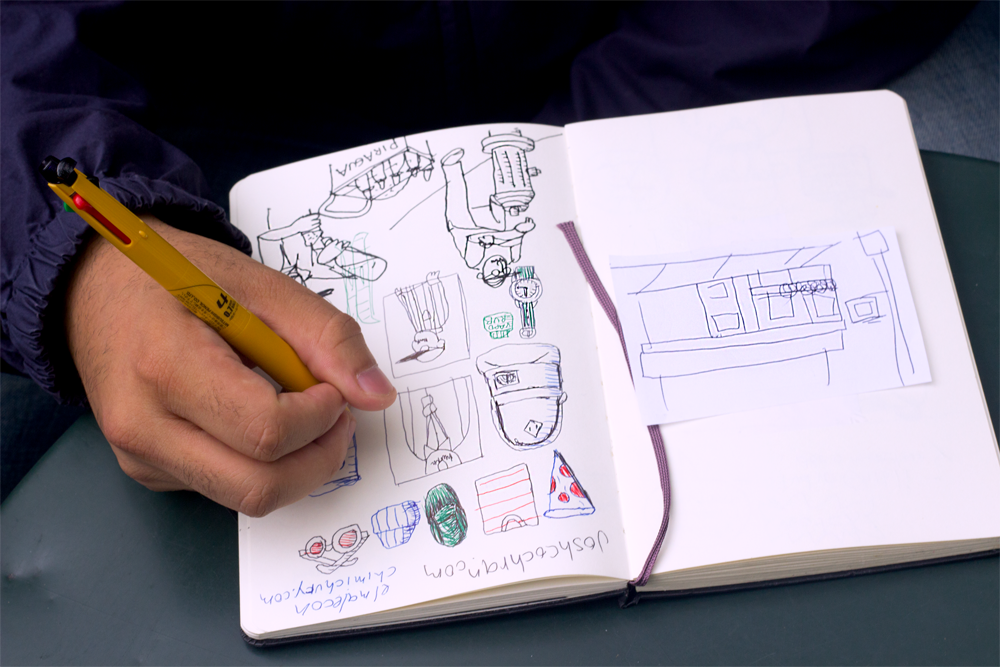
Why do you think the ’90s was such an influential time? So much so that it’s still being referenced now in style and trends.
It was such a great time for music and culture. The graffiti and art in general was just expanding from the ’80s and on. New York City was just beaming, in my opinion, and now it’s coming back around. I’m sure that some stuff from the early 2000s will start coming back around too. Everyone always looks back towards the past for influence. There are always so many good references.
What’s the meaning behind “Cleofus”?
Cleofus is just a random name that a girl I used to work with made up for me. It was a nickname that just stuck. I really don’t know where it came from. I just thought that it sounded funny and kept it.
One of your most consistent illustrations or characters is No Way Jose. How did you create him?
I wanted something that I could do daily. I’ve always been influenced by the old school comic strips like “Condorito” and New York style comics. And as you grow up, I think you just appreciate those dumb New Yorker quirks more. My uncles would always have a copy of “Condorito.” I never understood it, but the color schemes always stood out to me, they were ill. I wanted to do something like that. Everyday before I went into work or the night before, I would draw some. Or one day I would just sit and draw like five of them for the week. It’s like a kind of meditation for me to sit down and do a bunch of them.
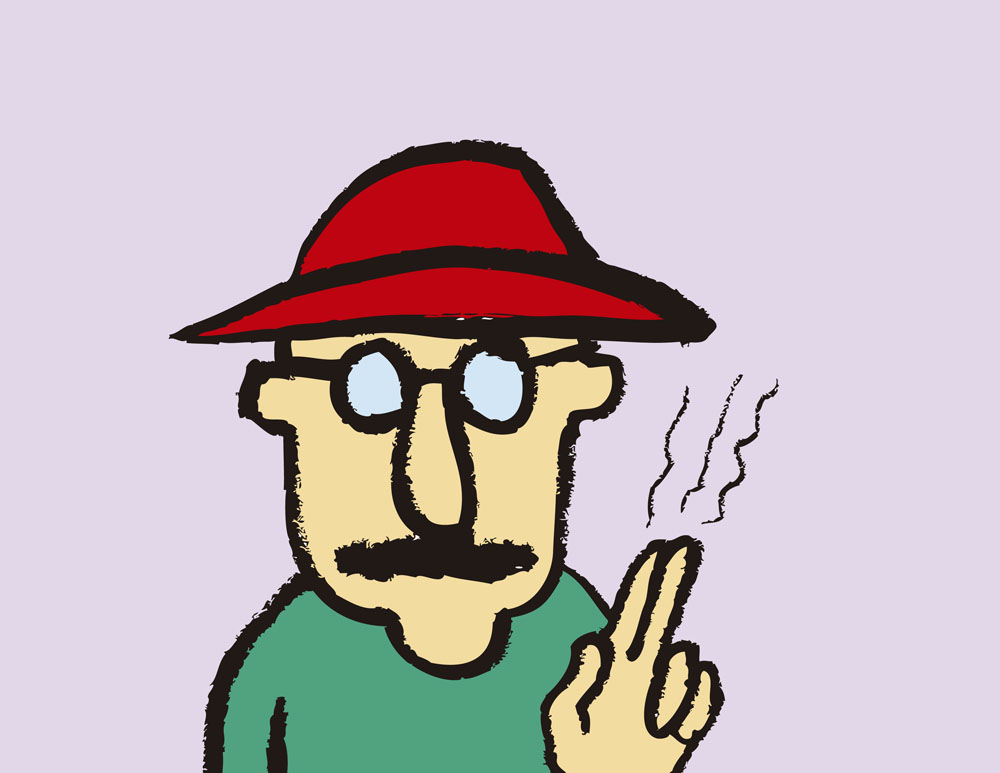
How do you come up with your ideas and themes for No Way Jose?
Sometimes, I draw the image first. Other times, I’ll hear a quote somewhere—whether overheard on the train or something a friend says—that’s interesting. It’s all over the place. Some are color and some are black and white. It’s like me. I’m sort of all over the place.
What’s up with No Way Jose’s mustache?
In the ’80s everyone had that uncle with the mustache. Everyone had that one perverted or womanizing uncle with the mustache. Some of us actually became that uncle [Laughs].
You recently created a piece that depicted No Way Jose washing Donald Trump’s head. What was that about?
It was a piece for a Hispanic Heritage Month show in The New York Times building. They wanted something with that theme, and I felt like I had to say something about the political climate and Donald Trump’s comments. The dishwasher is just such an iconic image of [working class] New York. Nowadays, it’s mostly Latin people doing these jobs. I just felt like this was a good opportunity to use Jose to make a statement. It was also the first time I ever put him on canvas. Most of the time, it’s digital and for Instagram. The piece sold.
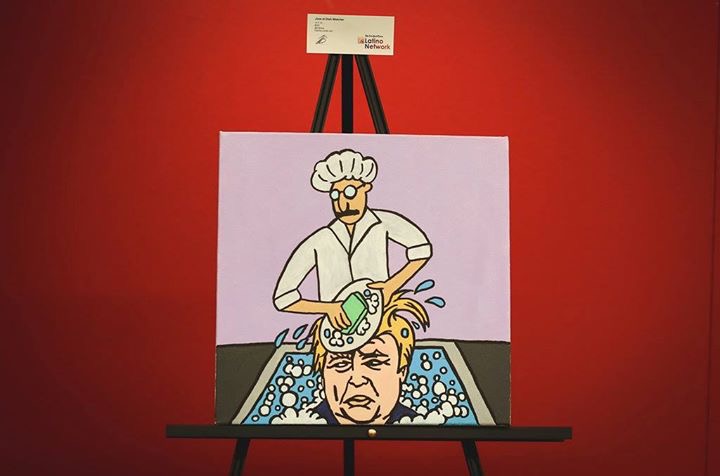
Do you make it a point to stay informed about news and trends?
Yes, definitely. I watch the news and try to stay on top of social media and current events. Sometimes I’ll find something and think that it would be ill to put Jose in its context. I try to stay current with what’s going on in the city or in the world, or Latin people.
I’ve seen your versions of logos for Action Bronson and Up North Trips. Were those sanctioned?
I’ve done that kind of stuff for fun because those are people or things that I feel a connection to. So I’ll do my interpretation of their logo.
Have you done official work for any brands or names?
I’ve done stuff for Staple Pigeon. I did my interpretation of their pigeon for a capsule collection. I also did stuff for Only NY and a few other people and streetwear brands. I’ve also done stuff for companies here and there, more graphic design and fashion-related stuff.
What about No Way Jose? Has he been solicited for any projects?
I’m doing some stuff with Jose and Turntable Lab. They reached out to me and asked me to do a version of him dubbed Hi Fi Jose. It’s going to be similar to No Way but with more turntable culture-related stuff like music and digging for records. There are a few of them on their Instagram right now.
There’s a lot of iconography in your logo work. Where does that stem from?
It goes back to the graffiti again. In the ’90s, someone would put up a throw up and they’d add some kind of element to it. It could be like a cigarette or a letter could be an object. That’s my interpretation of those roots.
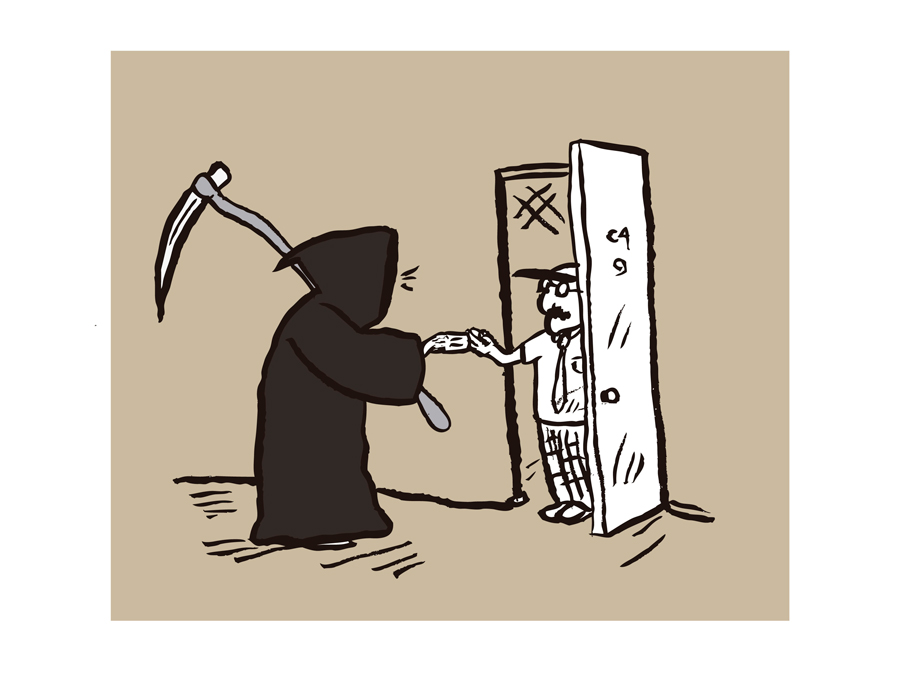
You also have a brand now named Polito USA. How did that start?
It’s all connected, but it came about in June when I got booked for an art show in Japan. I was reached out to by a company called Interbreed. Along with the show, they wanted to do a small collection of shirts and hats. Now, it’s going to expand to a few more cut and sew collections of things that we’re looking to bring out.
What’s it like getting into clothing production now?
A lot of it is new. I’ve done the basic stuff, like screen-printing, in the past. Embroidery and cut and sew is a whole new ball game that I’m trying to learn now. Everything’s a learning process, but I’m getting a lot of help from Japan and the Interbreed crew. They have been handling all of the production and I just oversee everything.
Tell me about that trip out to Japan. What was it like?
That was my first time out there and it was amazing. We were only out there for five days. It was like I blinked and [I was] already back in NY. Everything was so fast-paced, but so advanced and insane. They appreciate American culture so much. I wasn’t expecting to get so much love out there and it was crazy to reach such a broad audience. I’m definitely grateful for the opportunity.
I sense a lot of “Seinfeld” and “Curb Your Enthusiasm” in your style of illustrative humor. Is there any connection there?
[Laughs] I definitely watch those shows and am very influenced by them. I also have friends that are characters like that and inspire a lot of my work. Just being in New York City allows you to meet so many different personalities. That’s the kind of comedy that I was raised on.
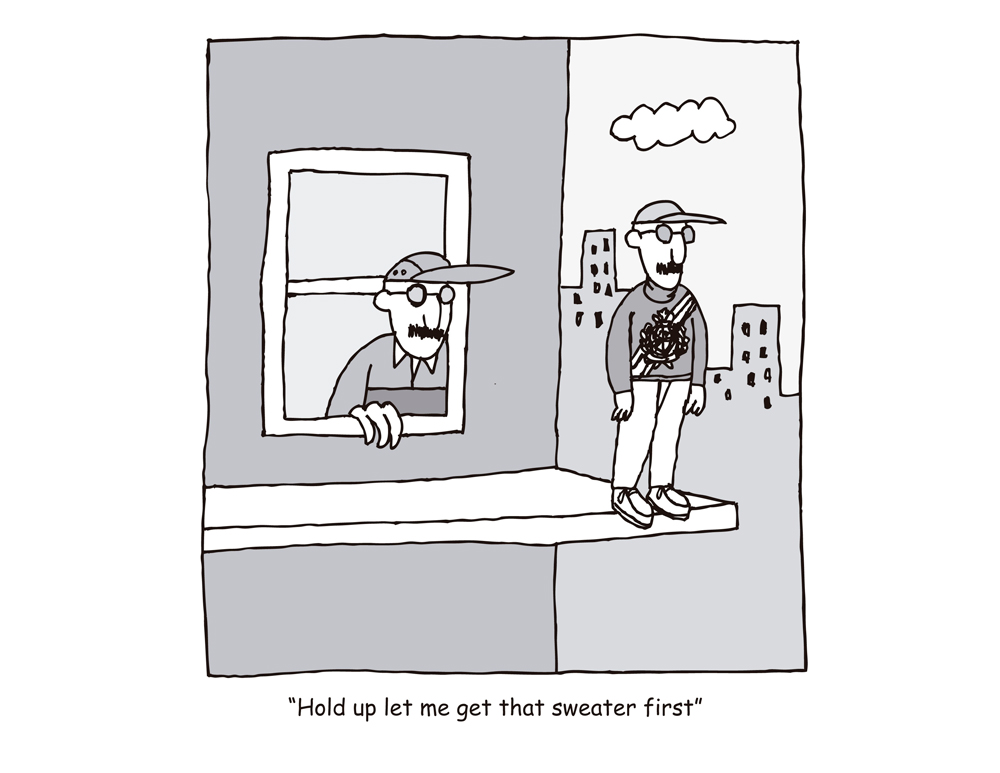
All of your work, from your zines to your current batch of digital illustrations, is rooted in DIY and self-produced culture. What can you share about that particular work ethic and experience.
I find it very fulfilling to have your own hands produce something. The books and zines are printed and made by machines, but sitting there and knowing the work that I put behind it means so much to me. Making something and having people seek it out means a lot. That’s why I like to do everything myself. If I print a zine, I like to fold everything myself and add all the stickers myself rather than have someone else do it.
What are your plans for Polito USA?
With the Polito USA brand, we’re going to be bringing back the colorful ’90s rugbies. The kind of stuff you see Jose wearing. J. Crew type/Ralph Lauren type. I’m also working on a collaboration with Oscar 1992 and different colorways of the long-billed hat. I’ve also got s few things coming out with a few streetwear brands. There’s also a new No Way Jose book coming out. It’s a book about New York City dweller etiquette.
***
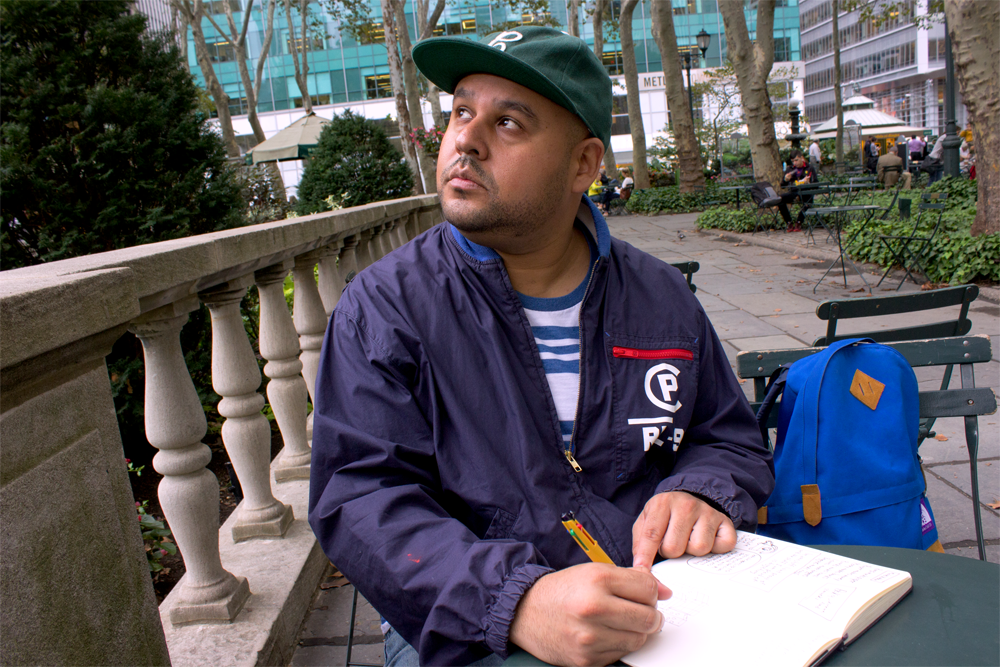
Follow Cleofus on Instagram @cleofus. Check out his brand at PolitoUSA.com.

